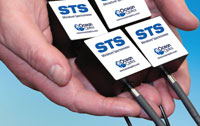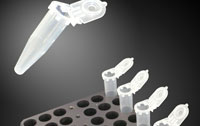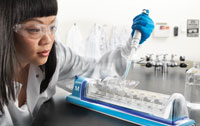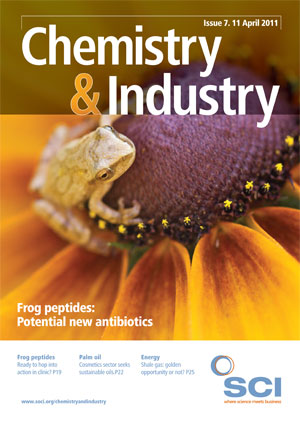PittCon is the world’s largest annual conference and exhibition for laboratory science; a place where providers of laboratory equipment and instrumentation can meet their existing, and potential, customers, and for those that run and work in laboratories, an opportunity to catch up on the latest research and methods in analytical science.
It is also a paradise for lovers of acronyms; from Maldi TOF to SEM, from XRF to FTIR; there is something for everyone. PittCon covers the entire range of laboratory equipment from the humble test tube through to the most sophisticated and advanced analytical instrumentation.
As an example of the size of this market, recent research by US market research firm Global Industry Analysts (GIA) suggests that the global laboratory glassware market will be worth $3.87bn by 2015; however, plastic will continue to make inroads into this dominance to reach $1.57bn. In comparison, the global laboratory chemical reagent business is forecast to reach $16.5bn by 2015 and the global biotech reagents market is forecast to climb to $33bn, while biotech instrumentation alone will reach $5.8bn.
As Marc Casper, the president and ceo of Thermo Fisher Scientific, expressed it: ‘With the growing number of complex analytical challenges our customers are facing around the world, there has never been a better time to invest in innovation. The need to offer individualised healthcare, protect the global environment and provide safer consumer products calls for innovative ways of applying technology in the lab, at the line and in the field.’ While it is impossible to cover every new and updated instrument, laboratory consummable or software introduced at PittCon, it is possible to highlight some of the key themes for the new developments.

Another important development is the ability of instruments and software to collect the whole dataset so that it can be revisited, reviewed and reanalysed at some future time. This can be valuable in looking for substances or elements that weren’t important at the time of the original analysis, for example, as the impact of an unidentified contaminant becomes more relevant in drug development.
To brighten up everyone’s ‘beige’ laboratories, as well as making laboratory staff more productive, Merck Millipore, known as EMD Millipore in North America, launched its new filtration system for easier and faster chromatography sample preparation in a range of colours. The Samplicity system provides a high throughput alternative to syringe-tip filters. The system allows up to eight samples – even those with high viscosity or particulates – to be loaded by pipettor and simultaneously vacuum filtered in seconds directly into standard liquid chromatography vials.

Automation continues to increase in importance to reduce manual intervention, thereby freeing up limited personnel resources. Apart from the automation of major operations, just opening and closing sample tubes can have a critical impact. To meet this challenge, for example, US liquid handling specialist Hamilton Robotics launched the FlipTube, for use on its Microlab Star and Nimbus automated liquid handling platforms. This 1.5mL polypropylene microcentrifuge reaction tube, claimed to be the first of its kind, features a snap-cap that can be automatically opened and closed using an independent pipetting channel. Elimination of the manual steps cuts time requirements by 20% for higher throughput and longer unattended runs, while minimising evaporation and contamination.

The Mini GC lightweight, portable gas chromatograph has been added to the range of Forston Labs LabNavigator sensor products through a collaboration with Seacoast Science. The MEMS chip sensor in the Mini GC allows the use of room air as a carrier gas, making the unit suitable for academic teaching as well as in-the-field and industrial applications.
Small enough to be hand held but designed for OEM applications, the STS CMOS-detector-based microspectrometer displayed by Ocean Optics is less than two inches square but said to provide performance characteristics comparable with larger systems, with full spectral analysis with low stray light, high signal-to-noise of >1500:1 and typical optical resolution of around 1.5nm (FWHM).
Method development
Equipment manufacturers are increasingly working with their customers on the development of methods for specific types of analyses. With the agreement of the partners, these methods are then being made freely available to the scientific community.
Through its Phenologix method development service, for example, Phenomenex develops novel analytical chemistry solutions that solve the separation and purification challenges of researchers in industrial, clinical, government and academic laboratories. Phenomenex is currently involved in a high blood pressure monitoring collaboration with the Mayo Clinic, in the US, focused on measuring aldosterone levels in plasma, as well as a project measuring nicotine/cotinine in blood plasma to develop a high throughput assay to meet the needs of insurance companies seeking to determine if an individual is a tobacco user.
AB Sciex is also expanding its applications library, the iMethods Application Center, with new test methods for toxicology, food safety and environmental analysis. A current example is a collaboration with The Institute of Cancer Research (ICR), which is investigating the spread of cancer in the human body in an effort to identify new and effective treatment strategies, to standardise advanced methods of mass spectrometry-based tissue imaging. The cancer researchers are using an AB SCIEX TOF/TOF 5800 System, a MALDI-TOF/TOF mass spectrometry (matrix-assisted laser desorption/ionization time-offlight technology) system, to conduct non-targeted discovery, looking at specific regions of the tumour, investigating proteins that are present in these regions and how they enhance metastatic progression.
Food security analysis can often be a rate limiting step, with pesticide screening, for example, requiring multiple injections in a GC-MS instrument. Thermo Fisher Scientific has developed a faster method that requires just one sample injection, using a Quantum gas chromatograph, which can acquire 3000 times selective reaction monitoring transitions per run.
Software developments
Agilent Technologies introduced its Intelligent System Emulation technology for the Agilent 1290 Infinity UHPLC unit to facilitate instrument-to-instrument method transfer. The software is said to enable the 1290 Infinity to emulate other systems, regardless of brand; it is claimed to be the first universal commercial LC system delivering the same chromatographic results without any instrument or method change.
Toronto-based Advanced Chemistry Development unveiled its development strategy for Spectrus, a new generation of analytical and chemical knowledge management software that enables organisations to better use the vast amount of information generated in today’s R&D environment. The vendor-neutral platform, built on the foundation of ACD Labs existing analytical chemistry tools, handles data from a broad range of techniques in one interface. Spectrus adds the unique ability to find, store, and relate not just the raw data or reports, but the important chemical context and human interpretations lost by existing knowledge management systems that are essential to foster projects and decisions in the future. The Spectrus suite of software will be phased in throughout 2011 and 2012.
Finally, the end of the paper laboratory notebook is a key informatics trend, with suppliers highlighting the additional benefits of searchability and portability of results both current and archived, consistency of presentation, and ‘survivability’ when confronted by the spilled coffee challenge, coupled with results imported directly from analytical instruments alongside researchers own notes in their electronic lab notebook systems. The advent of the iPad, which has also been used as the microprocessor controller and results presenter by some instrument suppliers, has brought the electronic notebook concept a long way from novelty to reality.





